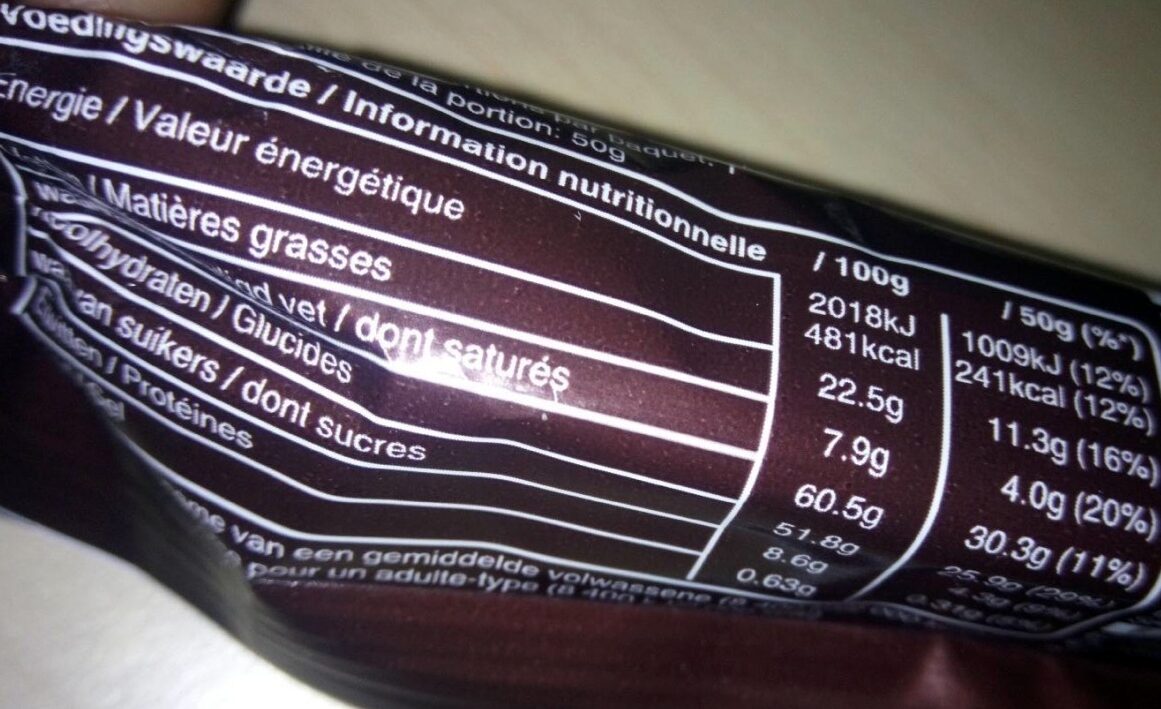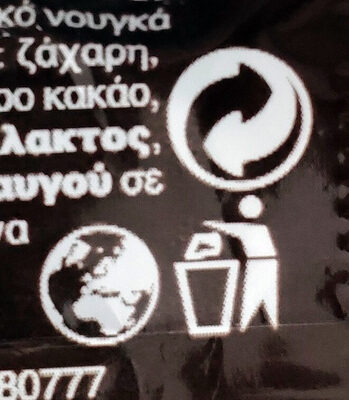Milk chocolate with soft nougat and caramel centre with fresh roasted peanuts - Snickers - 50 g
This product page is not complete. You can help to complete it by editing it and adding more data from the photos we have, or by taking more photos using the app for Android or iPhone/iPad. Thank you!
×
Barra-kodea: 5000159461122 (EAN / EAN-13)
Izen arrunta: Milk chocolate with soft nougat and caramel centre with fresh roasted peanuts
Kopurua: 50 g
Ontziratzea: en:Plastic, en:Wrapper
Markak: Snickers
Kategoriak: en:Snacks, en:Sweet snacks, en:Cocoa and its products, en:Confectioneries, en:Bars, en:Chocolate candies, en:Candy chocolate bars, en:Caramel chocolate bars, en:Chocolate confectionery with dairy filling
Etiketak, ziurtagiriak, sariak:
en:Green Dot, Tidy man
Saltzen diren herrialdeak: Aljeria, Belgika, Bulgaria, Zipre, Danimarka, Frantzia, Alemania, Hungaria, Luxenburgo, Mexiko, Maroko, Herbehereak, Polonia, Portugal, Errumania, Saudi Arabia, Serbia, Singapur, Espainia, Suedia, Suitza, Erresuma Batua, Ameriketako Estatu Batuak
Matching with your preferences
Report a problem
Datuen iturria
Product added on by teolemon
Last edit of product page on by october-food-facts.
Produktuaren orria -gatik editatua akitainu, aleene, alia, alwaysfurther, anticultist, arc2, bcd4e6, beniben, biba-ben, charlesnepote, date-limite-app, deid2, desan, duhowpi, ecoscore-impact-estimator, emmarawr, enesey, fantamagier, feeling, foodless, foodrepo, foodvisor, g123k, gavingt, gyrostat, halal-app-chakib, hungergames, huxhux, inf, insectproductadd, jmarchepro, jumati, kiliweb, kvliegen, macrofactor, madaawadh, mathias, moe-aswad, musarana, naeneo, nermeenreda, openfood-ch-import, openfoodfacts-contributors, openfoodfactsmx, packbot, prepperapp, quentinbrd, roto, scanbot, sebleouf, securita, seppl, sil, swipe-studio, tacite, tacite-mass-editor, thaialagata, twad, vaporous, youpidai, yuka.R0prYk5aUWMrZkpXdk5nVit4Q0U0ZXBubkk2WlpFZXlldUV0SVE9PQ, yuka.UnZzZE5LSmEvUEpicHRodTR4ZlJ4TTlrK0lPTFQyZUZDdkV4SVE9PQ, yuka.Wllva0t2OGF1L29YaXNFR293bnFwODFvbDYraVZrNkxkZGNzSVE9PQ, yuka.YlBnNElJY2xuOUEwc013K3BqVHNwb2xPd1lTd1UxbTZBZG9LSWc9PQ, yuka.ZDZRYVNiUWtvTWd6b2M4VThBdnUrZE12bDRDb1VXK1NkdHRMSVE9PQ, yuka.ZUxJREM2b2xxdU1ncDhjT3h5bnVvKzkyNk1XbFhGUHZHZVJJSUE9PQ, yuka.sY2b0xO6T85zoF3NwEKvlhRGadGEoGjHDgHjwWmExPGMc43Gf9JJ4dbcKag, yukafix, zixianglim, zoneblockscommunity.










